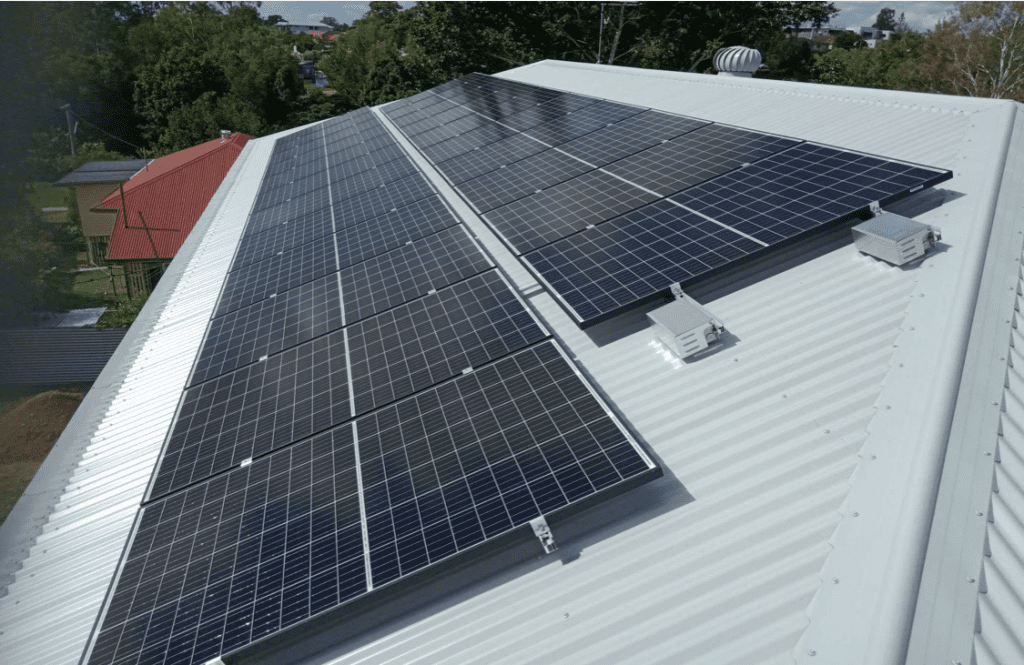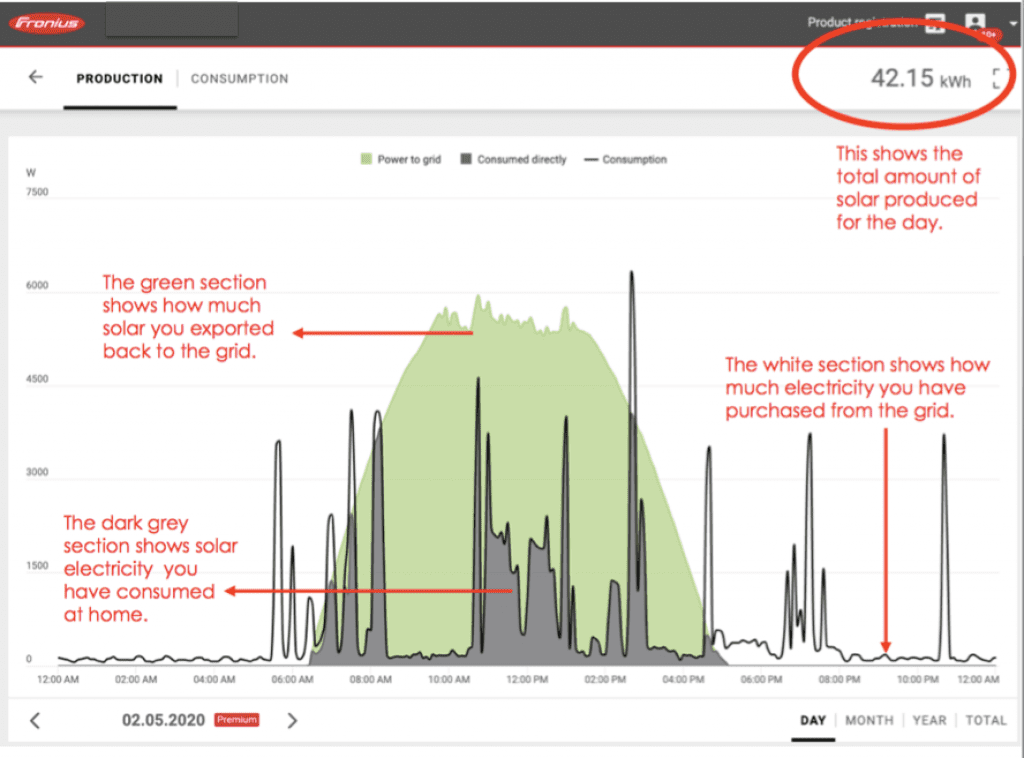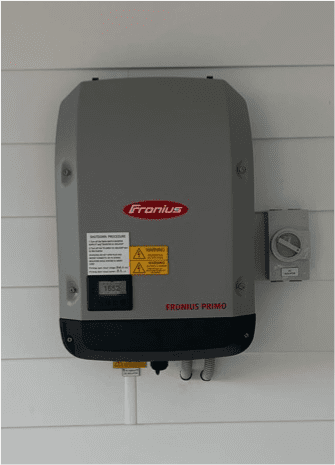How much do solar panels cost in Brisbane?
At GI Energy we can install any solar panel and inverter on the market. Every customers needs are different so we tailor solar solutions to suite your specific expectations, budget and roof area.
Some solar panels are more expensive than others, and some are less reliable and efficient than others. The most expensive solar panel is not always the best solar panel for you. On the flip side, the cheapest is almost never the right solar panel for you!
So, in a series of articles looking at how much solar costs in different cities and towns in Australia, we are taking at look at how much solar panels cost in Brisbane, and why they cost this amount.
A typical home solar system in Brisbane is 6.6kW and a good quality installation will cost between $4,500.00 up to $10,000.00. But why the big difference in cost?

The image above shows a 7.2kW system installed with Phono Solar TwinPlus solar panels.
You may notice we have written “good quality” solar installation in the heading above. You can go way cheaper than this if you wanted to. The range of pricing above allows for a reputable company, installing good quality solar panels and inverters.
The reason the range is from $4,500 – $10,000 is due to the choice of solar panel and inverter you want to install. The bottom end of that range will get you a really good quality Chinese made inverter (Sungrow is the best for this price range in our opinion) paired with a reputable, long serving solar panel from a large manufacturer that has been present in Australia for many years. See Canadian Solar, Longi and Jinko for examples of solar panels that fit into this category. The higher end of this range will get you a European made inverter (see Fronius, SMA, Fimer) paired with a premium solar panel brand.
If I spend $10,000 instead of $4,500 what extra am I getting?
The difference between the Chinese made inverters and the more expensive European made inverters is twofold: efficiency and reliability. In relation to the solar panels, if you go to the higher end of that range, you will get a more efficient solar panel. Basically, this means you will have an overall system that is more reliable, produces more energy and provides more savings for your home.
So, is it worth spending more?
Everyone is different, so we would encourage you to talk to a solar consultant before making up your mind here. However, for most people, we would suggest a spend of approximately $7,000 to get a great balance between having very reliable and efficient products, without paying too much to get the absolute “best”. You can pay a premium to get a slightly more efficiency overall solar system, or pay for the brand name of a product, and not really get too much back in terms of tangible savings. See best solar panels for more info.
What about even cheaper systems?
Firstly, there are solar companies installing 6.6kW solar systems in Brisbane for way less than $5,000 these days. But be careful here, because in the solar industry the term “if you buy cheap, you buy twice” is truer than any other industry I know. It is very easy for solar retailers to find and supply cheaper solar panels, and cheaper inverters. It is also very easy to find cheaper contractors to install solar systems. But going too cheap will usually means you will end up with products that will be unreliable long-term, and also increases the risk of the install not being up to scratch and causing problems. We outline the difference between a good installation and a poor one here.
What are the solar rebates in Brisbane?
There are currently generous solar rebates available for solar panels in Brisbane. Australia is split in four zones for solar rebates with each zone being entitled to slightly different rebates, depending on the geographical location. Essentially, the more sunlight an area receives, the higher the solar rebate. This is because the more sunlight you receive, the more clean energy you are likely to produce. These rebates come in the form of Small-scale Technology Certificates (STCs) and are associated with the size of the solar array, as well as the location it is installed in.
Brisbane is located in zone one, which means it receives the second highest amount of solar rebate in Australia. So, if you were to install solar panels in Brisbane you would receive between 45 STCs (3kW solar) – 1520 STCs (100kW solar). Each of these STCs has a monetary value, which at the time of writing is $35 per certificate. As an example, if you installed a 7kW solar array in Cairns, you would receive a solar rebate equalling 106 STCs x $35 = $3710.00.
Once you go over 100kW of solar panels you would no longer get any STCs, so there would be no upfront solar rebate. This solar system would then only be eligible for Large-scale Technology Certificates (LGCs). LGCs are paid as an ongoing subsidy are are dependent on the actual production of the solar panels, which is measured and reported using approved metering software.
Solar production in Brisbane:

The chart above shows monitoring from a 7.2kW solar installation in Brisbane.
Brisbane has a humid subtropical climate, with generally warm to hot and humid Summers and milder dryer Winters. Brisbane’s overall temperature variability is somewhat less than most Australian capitals. Temperatures only occasionally reach 35 °C or more. June and July are the coldest months, with average maximums of about 22 °C; maximum temperatures below 20 °C are rare. Brisbane has never recorded a sub-zero minimum temperature (with one exception at night), and minimums are generally warm to mild year-round, averaging about 21 °C in summer and 11 °C in coldest month. From November to March, thunderstorms are common over Brisbane. However, on an annual basis, Brisbane averages 124 clear days.
Brisbanites basically don’t have too much to complain about with the weather! And as a result of all those sunny days your solar in Brisbane will do very well indeed. The general calculation for how much energy you can produce with solar power in Brisbane is 4.2 peak sunshine hours x the number of kWs you have installed. For example, a 1kW solar system should produce 4.2kW per day, on average, across the whole year. So, if you installed a 6.6kW system for you home, you would produce 27.72kWhs of electricity each day, when averaged out across the year (4.2 x 6.6 = 27.72).
For a detailed case study of how solar works in Brisbane, click here.
In Summary:
The cost of solar panels in Brisbane will vary depending on exactly what you would like installed. If you have a budget of $5,000 or more, you can be confident you will be able to get something really good quality from a reputable solar retailer. You should always still do your research on the manufacturer of the solar panels and inverter you choose, as well as the solar retailer selling you the solar system.
Here are some links worth checking out:











